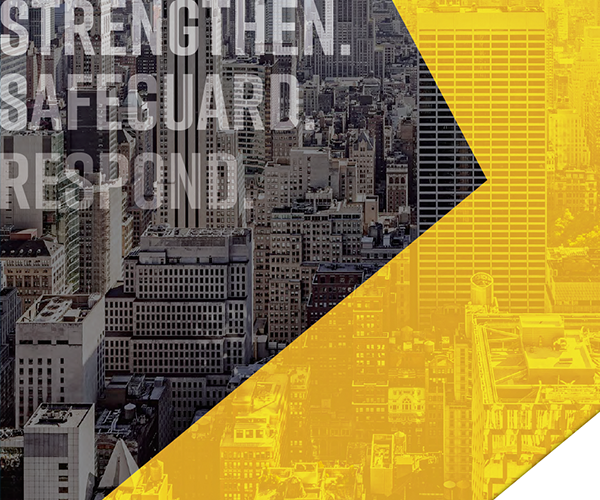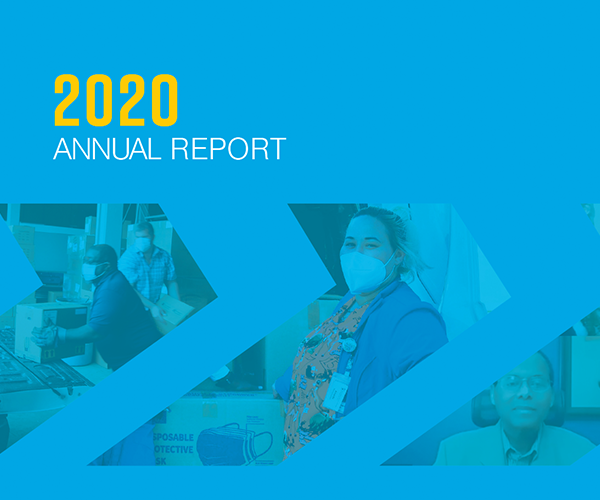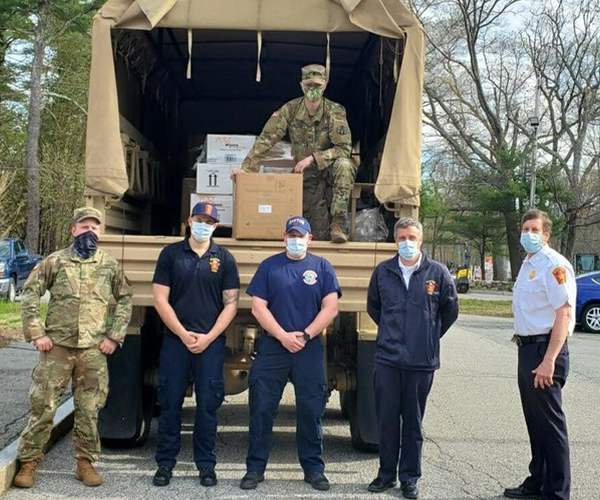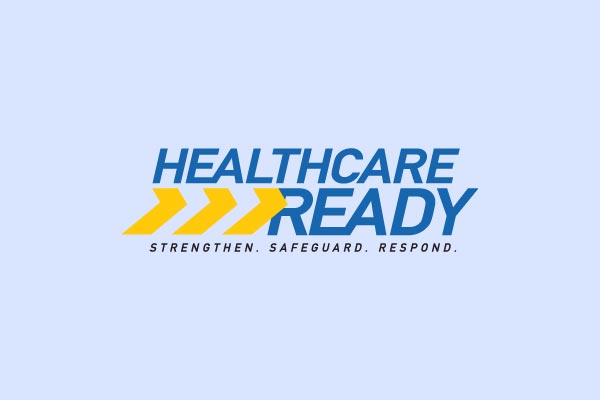- About us
- >
- MISSION AND VISION
About Healthcare Ready
Our Vision
We build resilient communities that are prepared for, can respond to, and recover from disasters and disease outbreaks. The health of all, especially those most impacted by these crises, depends on strong infrastructure, seamless emergency response and supply chain coordination to ensure continuity of care.
Our Mission
Healthcare Ready leverages unique relationships with government, nonprofit and medical supply chains to build and enhance the resiliency of communities before, during and after disasters.
Equity Statement
Healthcare Ready understands equity to be both a structural outcome and an intentional process. We know that social determinants affect how communities and individuals can navigate and heal after a crisis. We work to overcome health disparities caused by disasters and disease outbreaks so that everyone, regardless of their socioeconomic or medical status, can thrive after a hazardous event. The many systems and structures related to health readiness, response, and recovery must actively address the inequities and disparate outcomes experienced by specific groups. These individuals include, but are not limited to, those defined by race, ethnicity, income, gender, sexual identity, age, disability, health/medical status, and geography.
Organizing Principles
Healthcare Ready helps strengthen the US healthcare system and assist communities in planning for, responding to, and recovering from disasters. As a nonprofit organization, we serve as a linkage point between industry and state, local, tribal, territorial, and federal governments. We work with healthcare supply chain stakeholders, emergency management officials, patient advocacy groups, and community-based organizations to safeguard patients before, during, and after natural disasters and public health emergencies. The following principles provide the framework for our partnerships:
- The nation’s disaster preparedness, response, and recovery efforts must include input from the end-to-end healthcare supply chain and public and private sectors.
- Government and industry stakeholders must work collaboratively in supply chain readiness and response planning to create resilient communities and prepare the nation for future crises on the rise.
- Our goal is to ensure historically underserved communities and medically fragile populations can access medications and medical care during a pandemic or natural disaster.
Community resilience depends upon a robust healthcare system.
In the 15 years since Hurricane Katrina struck New Orleans, we find ourselves still grappling with this persistent question: Why are some communities disproportionately impacted by natural disasters and emergencies?
We know that—contrary to the mainstream narrative that disasters are random events that happen to all communities for which there is ‘only so much we can do,’—there are genuine reasons why vulnerable populations are more affected by natural hazards and disease outbreaks. It’s due to the fact that when the systems that society has set up to ensure that people are safe and healthy are either non-existent or not strong enough, disasters will cause undue and avoidable harm to these vulnerable communities.
Since it was formally established as a nonprofit organization in 2007, Healthcare Ready has seen first-hand the sizable impact of natural and manmade disasters on marginalized communities. Specifically, these are neighborhoods where appropriate investments in preparedness and health infrastructure are lacking. These include clinics, hospitals, pharmacies and other local resources that are a vital part of any community successfully navigating a catastrophic event.
Healthcare Ready sits at the nexus of healthcare, public health, and emergency management – sectors who depend upon each other to coordinate, cooperate and collaborate during a crisis. As a result, we are uniquely able to anticipate and identify potential breakdowns in the important communication required among these interconnected stakeholders in order to safeguard communities in a crisis. Healthcare Ready brings together public and private sector partners and organizations at all governmental and community levels to ensure they are working together before, during, and after emergencies occur to protect residents and at-risk patients.
Disasters are the weakest link in a community’s ability to thrive and prosper, which is why Healthcare Ready exists.
Healthcare Ready focuses on fostering individual and community resilience to avoid the vicious cycle of even greater poverty and worsening impacts from the next disaster. We were created to strengthen the weakest links in preparedness and response—and thereby strengthen a community’s ability to withstand a crisis. We work to do this in a way that minimizes harm and creates a foundation for a faster and more equitable recovery. By doing so, we empower communities to not only survive, but to thrive and prosper.
Building resilience helps marginalized communities break the vicious cycle between poverty and disaster.
While disasters affect the poor and affluent alike, it is a community’s resilience—the ability to adequately prepare for and bounce back from a disaster—that makes all the difference. This capacity to recover quickly rests on a set of interdependent factors that all communities have, though not all in equal measure. Some factors are socioeconomic and specific to each family. Most factors, however, are community-based, such as the availability of reliable housing and good physical and communications infrastructure, along with well-funded services for residents.
When these factors are abundant in a community, they shore up its “resilience account,” making it more likely residents can recover from a catastrophic event. Affluent communities tend to have well-stocked “accounts,” where they can draw upon those resources to prepare for a disaster, survive its impact and speed up their short- and long-term recovery.
For poorer communities whose resilience accounts are perennially running low, a disaster can have an outsized impact that not only drains resources, but prevents the community and residents from re-stocking them over the long term. Most troubling of all—these deficiencies make the effects of the next disaster worse and more long-lasting.
Bottom Line: A strong health infrastructure is crucial to a community’s resilience.
The largest driver of resilience in a community is its health infrastructure. That’s because every disaster has the unique ability to quickly tax a community’s health system by driving up the public’s need for these facilities while simultaneously reducing access to them. How quickly a community bounces back from these challenges depends on its overall resilience. As challenges evolve and escalate around us—from pandemics to hurricanes and other natural disasters—Healthcare Ready stands ready to help communities prepare for the inevitable, respond when in crisis, and recover to be more resilient and better equipped to weather the next disaster.

YOUR GUIDE TO HEALTHCARE READY
Learn how we work with local governments, private industry and federal partners to create resilient communities that are prepared for, can respond to and recover from natural disasters.

2020 ANNUAL REPORT
Learn how your support helped Healthcare Ready Positively Impact Communities during COVID-19.

COVID-19 IMPACT REPORT: THE FIRST 6 MONTHS
Healthcare Ready exists to support our nation’s healthcare supply chain during crises like what we’re experiencing today.


